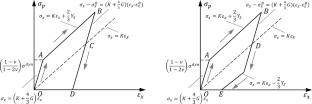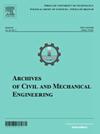激光冲击强化后低应力铣削微去除量对GH4169高温合金表面完整性和疲劳寿命的影响
摘要
激光冲击强化(LSP)可以显著提高金属材料的疲劳寿命,但也会使金属材料的近表面形貌退化。本研究开发了一种应用LSP后低应力铣削(LSP- lsm)的混合路由。微去除深度(\({\delta }_{LSM}\))作为GH4169的设计变量,以平衡表面粗糙度降低和压缩残余应力(CRS)的保留。在LSP压痕深度分析的指导下,实验量化了LSP- lsm中\({\delta }_{LSM}\)对GH4169表面完整性和高周疲劳寿命的影响。在300 μm附近的亚表层中,LSP产生的CRS场延伸约为1 mm,最大约为- 700 MPa,同时使表面粗糙度\({S}_{\text{a}}\)增加到3.72 μm,为68.3% increase compared with the untreated surface. In contrast, LSP-LSM reduces the minimum \({S}_{\text{a}}\) by 74.7% compared with LSP and by 57.4% compared with the untreated surface, increases the surface CRS by 287.4% and the maximum CRS by 37.0%, and shifts the stress peak toward the surface (CRS depth of approximately 700 μm). The fatigue life increases by 86.8% compared with LSP and by 192.2% compared with the untreated condition. LSP refines the surface grain size from approximately 254 μm to approximately 24 μm; LSP-LSM effectively retains this refinement at approximately 30 μm. Overall, an optimum \({\delta }_{LSM}\) of approximately 100 μm is identified under the present conditions. Building on these findings, the LSP-LSM route provides engineering guidance for GH4169 components and can be extended to curved and thin-walled geometries; evaluation of broader LSP/LSM settings and fatigue conditions will support component-level implementation.Graphical Abstract

Laser shock peening (LSP) markedly enhances the fatigue life of metallic materials but can degrade near-surface topography. This study develops a hybrid route that applies LSP followed by low-stress milling (LSP-LSM). The micro-removal depth (\({\delta }_{LSM}\)) is treated as a design variable for GH4169 to balance surface roughness reduction and retention of compressive residual stress (CRS). Guided by the indentation depth analysis of LSP, we experimentally quantify how the \({\delta }_{LSM}\) in LSP-LSM affects the surface integrity and high-cycle fatigue life of GH4169. LSP produces a CRS field extending to approximately 1 mm, with a maximum of approximately − 700 MPa within a subsurface layer near 300 μm, while increasing the surface roughness \({S}_{\text{a}}\) to 3.72 μm, a 68.3% increase compared with the untreated surface. In contrast, LSP-LSM reduces the minimum \({S}_{\text{a}}\) by 74.7% compared with LSP and by 57.4% compared with the untreated surface, increases the surface CRS by 287.4% and the maximum CRS by 37.0%, and shifts the stress peak toward the surface (CRS depth of approximately 700 μm). The fatigue life increases by 86.8% compared with LSP and by 192.2% compared with the untreated condition. LSP refines the surface grain size from approximately 254 μm to approximately 24 μm; LSP-LSM effectively retains this refinement at approximately 30 μm. Overall, an optimum \({\delta }_{LSM}\) of approximately 100 μm is identified under the present conditions. Building on these findings, the LSP-LSM route provides engineering guidance for GH4169 components and can be extended to curved and thin-walled geometries; evaluation of broader LSP/LSM settings and fatigue conditions will support component-level implementation.
Graphical Abstract

 求助内容:
求助内容: 应助结果提醒方式:
应助结果提醒方式:


